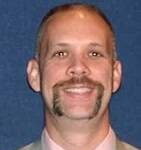Motorists know they’re about to enter Jonesville by the thin green sign on State Road 11 bearing the town’s name. As tourism goes, just about the only thing recognizable about the town is the tavern on the main drag known to locals as “the Brick.”
Actually, there’s a little-known fact that sets Jonesville apart, one deserving of the kind of roadside recognition Columbus gives to its famous native-born, such as Ross and Don Barbour of Four Freshmen fame or NASCAR driver Tony Stewart, through signs at the city’s westside entrance proclaiming their connection.
Jonesville needs that kind of recognition for one of its own, L.L. Corum, co-champion of the 1924 Indianapolis 500. He was crowned along with Joe Boyer. Today, after almost 100 Indianapolis 500s, he has become pretty much of a footnote in the history of the Greatest Spectacle in Racing.
Actually, his connection to a small town in southern Bartholomew County is even more obscure.
[sc:text-divider text-divider-title=”Story continues below gallery” ]
The county has had several connections with the 500. Stewart ran in several but never got the checkered flag. Cummins Inc. has had a number of entrants in the May classic, including a pole sitter, the only car to run all 200 laps without a pit stop and the 1987 company-sponsored car driven by Al Unser Sr. that won the race.
In fact, Corum stands as the only Bartholomew County product on the Borg-Warner trophy given to the race winners.
Unfortunately, his connection to Bartholomew County had been pretty much ignored until local resident Steve Ellison heard Speedway historian Donald Davidson name the Hoosier drivers who had won the 500 during an appearance on the “Talk of Gasoline Alley” show earlier this year. When he got to Corum, he pronounced the 1924 co-champion’s birthplace as “Jonesburg,” providing yet again another unintentional swipe at the southern Bartholomew County community.
“Most (local people) don’t know who he was or where he was born,” Ellison wrote in an email. “As of now he’s pretty much forgotten.”
In fairness, the connection of the 1924 Indianapolis 500 co-champion to Bartholomew County is pretty abbreviated.
Some local residents were aware of the ties at the time of the race. In prefacing an Associated Press wire service report of the May 30, 1924, race, the editors of the Columbus Evening Republican led off with a boxed paragraph noting that Corum was a Bartholomew County native.
The short introductory story reported that he was born in Jonesville but that the family had moved from the area 20 years earlier when he would have been 5 years old. The story also alluded to the fact that he was a second cousin to Mead Shumway of Columbus.
Contributing to the loss of the county’s connection to a 500 champion was the 1924 race itself, which even by Roaring ’20s standards was one wild and wacky affair. Although there has been only one set of co-champions in 500 history, the practice that contributed to that shared title was commonplace at that time.
In fact, the driver who replaced Corum had started the 500 in another car and was eventually followed behind that wheel by not one but three other drivers, including Corum. That particular set of musical cars was made even more ironic by the fact that one of the drivers, Thane Houser, would later become indelibly involved in the history of Cummins at the 500 and would come to call Columbus his home for more than three decades.
Although his replacement in the No. 15 car got the checkered flag, it was Corum who set the stage for the winning run. He started the race in the 21st position but by the 111th lap had climbed to third place. However, according to a story that appeared in The Evening Republican, the race had taken its toll, making him “sore about the hips from being forced against the side of his car at the turns.”
Boyer, who had left his No. 9 car to take Corum’s ride, was replaced by Ernie Astenberg. Corum must have made a quick recovery from his aching hips because he replaced Astenberg late in the race. And that’s when the irony sets in.
As the field was nearing the 200th lap, Corum was pulled from the No. 9 car and replaced by none other than Houser, a legend in local racing history.
Although he was a 500 driver, his greatest fame came when he served as the riding mechanic on the 1931 No. 8 entry by Cummins. With Dave McDonald behind the wheel, the No. 8, which was the last to qualify that year, proceeded to run the entire 500-mile distance without making a pit stop. Houser, who moved to Columbus to work for the engine company, had a hand in other Cummins entries, including the 1952 Fred Agabashian car that won the pole position.
Houser’s performance as a driver in the 1924 race left something to be desired. After taking over the No. 9 car, he crashed into the wall.
Corum never did replicate his co-championship. He continued as a driver for several years but eventually disappeared from history. He died in 1949. Ellison thinks that Jonesville or Bartholomew County needs to resurrect his memory.
What better way than a companion for that thin green sign on State Road 11 — a much larger placard that declares Jonesville as the birthplace of the co-champion of the 1924 Indianapolis 500.
Harry McCawley is the former associate editor of The Republic. He can be reached at [email protected].




